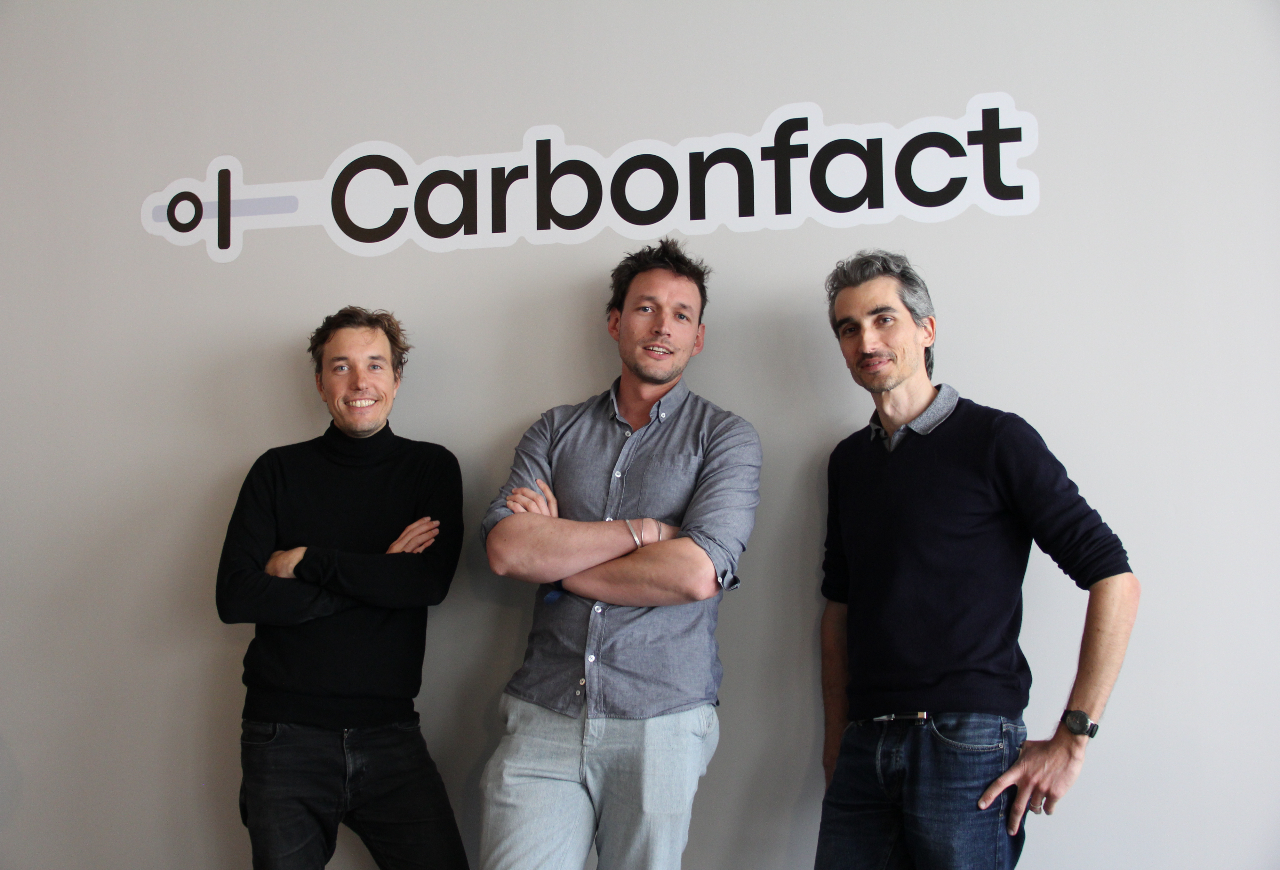More than 150 brands and suppliers in the apparel and footwear industry use Carbonfact software to help them to better understand where their carbon emissions come from and how they can reduce them.

Paris-based Carbonfact has raised $15m (€14m) for its carbon management software aimed at helping the fashion industry to measure, reduce and report their carbon emissions.
The series A fundraising round was led by existing investor Alven, a venture capital firm investing in early-stage companies. Start-up tech accelerator Y Combinator, which invested in Carbonfact at inception in 2021, also participated in the round alongside VC tech investor Headline, a first-time investor who has also joined the board.
Carbonfact said its software allowed companies in the fashion industry to automate the time and resource-intensive task of gathering and consolidating primary data from multiple supply chain tiers in order to identify emission-intensive manufacturing processes, build carbon reduction plans and export automatically created reports to meet carbon disclosure requirements.
It said the software would help companies align their operations with multiple regulatory frameworks and ensure compliance with new laws and standards.
Carbonfact has onboarded more than 150 customers, including apparel and footwear brands Columbia, New Balance, and Carhartt since its launch, and said it had seen an increase in demand for its software in the first quarter of this year, which it attributed to increasing regulatory pressures on the fashion industry to measure and disclose emissions.
Marc Laurent, CEO and co-founder of Carbonfact, said: “After meeting with hundreds of textile brands and suppliers we realised that collecting data and reporting on all product and supply-chain information is a complex task that requires more comprehensive data management than spreadsheets allow. We believe that fashion brands should be able to measure and report on climate progress with limited manual work.”
The company said it would use the investment to help fashion retailers and manufacturers measure and build plans over the next 12 months to reduce their emissions in line with the EU’s Corporate Sustainability Reporting Directive (CSRD), as well as to expand its team across Europe.
Consolidating complex data
Carbonfact’s software can be plugged into fashion companies’ own IT systems, such as their enterprise resource planning systems (ERP), which include information about purchase orders to their suppliers, and product lifecycle management (PLM) software, which stores product information.
It then cleans and analyses the data, identifying gaps and anomalies, including incorrect data. Employing machine learning, the software is able to systematically fill in any missing details and provide reliable carbon footprint calculations, even when data is incomplete.
Speaking to Impact Investor, Laurent said: “A typical fashion company manages information about their suppliers through their ERP or PLM systems. The problem with this data is that it is very unstructured and messy. Our software is able to sift through the data and make sense of it, making it easier for companies to identify the sources of their carbon emissions and address them.”
Ramp-up in regulation
Carbonfact said that the regulatory landscape had become difficult for apparel and footwear companies to navigate due to constantly evolving standards, such as the EU’s Product Environmental Footprint Category Rules (PEFCR), which it said required expert knowledge to respond to.
Continuing with this example, the company explained that to calculate the environmental impact of a single garment, more than 100 data points were required by the PEFCR. This includes weight, origin, and energy usage during manufacturing, which the company said poses a significant challenge for fashion companies due to the intricate, multi-layered nature of their supply chains.
The firm believes that the currently largely manual processes used by companies to gather and consolidate data across their own businesses and supply chains is not only error-prone but also becoming increasingly unsustainable as new laws come into force and increase reporting requirements.
It’s all in the design
The recent The State of Fashion 2024 report states that the fashion industry is responsible for between 3% and 8% of total greenhouse gas emissions globally.
According to the same report “…up to 80% of a product’s environmental impact is determined in the design phase and is baked into materials and dyes”.
The EU’s Ecodesign for Sustainable Products Regulation (ESPR), which is set to come into force by 2025, hopes to go some way in addressing the issue by setting minimum design standards for all individual products sold within the EU.
In response to these requirements, Carbonfact has developed a new suite of modelling tools that enable fashion brands to understand how changes in product design or supplier selection could affect carbon footprints before products are made, allowing them to focus on reducing emissions rather than offsetting them after the fact.
“We have developed a product impact simulator that helps creative and design teams model product changes and see what the impact will be on their upcoming collections. This module will be one of the tools that can be used by brands to comply with the ESPR,” added Laurent.






